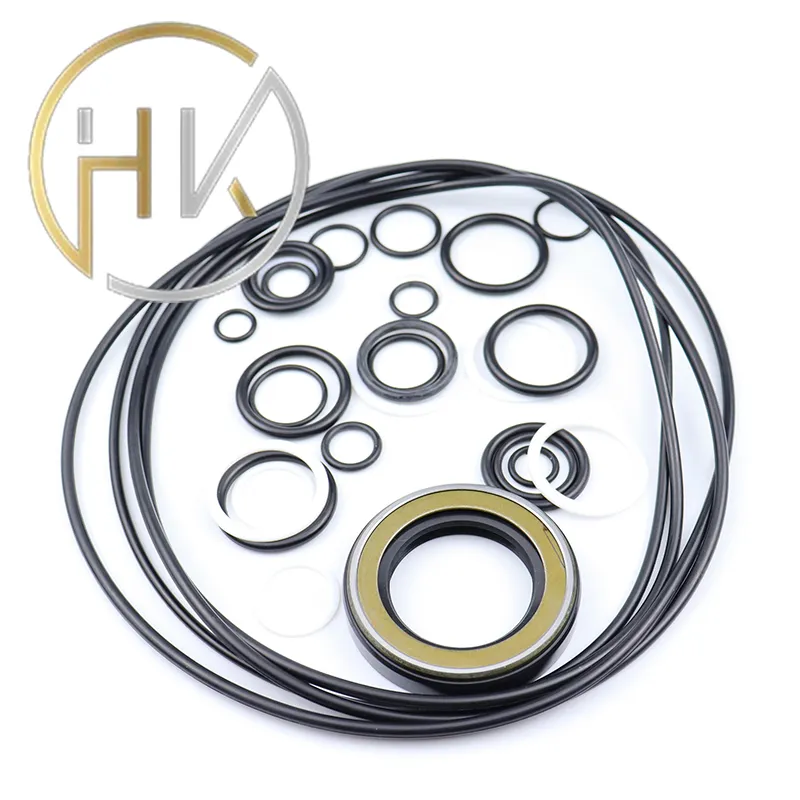Dic . 04, 2024 09:52 Back to list
rotary oil seals
Understanding Rotary Oil Seals Function, Types, and Importance
Rotary oil seals are essential components in various machinery and equipment, ensuring reliable operation by preventing the leakage of fluids and protecting internal parts from contamination. These seals are specifically designed to work in rotary applications, where shafts rotate within a housing. Their primary function is to provide a barrier against the escape of oil and other lubricants while keeping out dirt, dust, and moisture, which can severely damage machinery.
Functionality of Rotary Oil Seals
At the core of a rotary oil seal's functionality is the dynamic and static sealing surfaces. The dynamic sealing surface is where the seal makes contact with the rotating shaft. This contact creates a tight seal, preventing the hydraulic fluid or oil from leaking out. The static sealing surface, on the other hand, ensures that the oil seal remains in place against the housing, offering a complete seal against external contaminants.
Rotary oil seals typically feature a flexible lip that exerts pressure against the shaft as it rotates. This flexibility allows for slight variations in shaft diameter or misalignment without compromising the seal's integrity. The material used for the lip can vary, with common choices including rubber, polyurethane, and fluorocarbon, each offering different levels of heat and chemical resistance, making them suitable for various applications.
Types of Rotary Oil Seals
There are several types of rotary oil seals, each designed for specific operational needs
1. Standard Oil Seals These are the most common type, consisting of a simple design featuring a rubber lip and a metal casing. They are widely used in automotive and industrial applications.
2. Double-Lip Seals Featuring two sealing lips, these offer an additional layer of protection against contaminants. They are beneficial in environments subjected to severe conditions or where extended life is necessary.
3. Spring-loaded Seals Incorporating a spring mechanism, these seals maintain consistent contact pressure with the shaft, improving sealing performance over a range of operating conditions.
rotary oil seals

4. Rotary Shaft Seals Specifically designed for rotating shafts, these seals come in various shapes and sizes, providing flexibility and adaptability for different machinery.
5. High-Temperature Seals For applications exposed to high heat, these seals are made from materials that can withstand elevated temperatures, ensuring functionality and longevity.
Importance in Machinery
The significance of rotary oil seals cannot be overstated. In machinery, they play a crucial role in
- Preventing Fluid Leakage By sealing off the lubricants within machinery, rotary oil seals reduce waste and enhance operational efficiency.
- Protecting Against Contaminants Dirt and dust can lead to rapid wear and tear of components. Oil seals act as a barrier, ensuring that internal mechanisms remain clean and functional.
- Increasing Equipment Lifespan Proper sealing reduces the need for frequent maintenance and repairs, ultimately extending the life of the machinery.
- Enhancing Performance By maintaining necessary lubrication and reducing friction, rotary oil seals contribute to smoother and more efficient operation.
In summary, rotary oil seals are vital components that enhance the reliability and efficiency of machinery across various industries. With diverse types suitable for different applications, they ensure that machinery operates smoothly, remains protected from external contaminants, and maintains optimal performance. Understanding their functionality and types can help engineers and technicians make informed decisions when selecting the right oil seal for specific applications, thereby promoting better maintenance practices and equipment longevity. Whether in automotive engineering, aerospace, or industrial machinery, the importance of rotary oil seals is clear they are integral to the seamless operation of modern machines.
-
Unlocking the Potential of Hydraulic Systems with Essential Sealing Solutions
NewsAug.06,2025
-
Unleash the Power of Your Hydraulic Systems with Our Premium Seal Kits
NewsAug.06,2025
-
Specialized Hydraulic Seal Kits for Breakers, Pistons, and Presses
NewsAug.06,2025
-
Revitalize Hydraulic Systems with Premium Repair and Seal Kits
NewsAug.06,2025
-
Fortify Your Cylinders with Premium Sealing Solutions
NewsAug.06,2025
-
Elevate Hydraulic System Reliability with Specialized Seal Kits
NewsAug.06,2025
-
TCN Oil Seal Metal Ring Reinforcement for Heavy Machinery
NewsJul.25,2025
Products categories
















